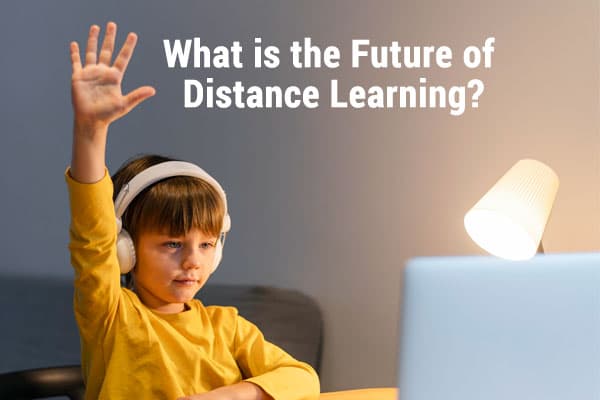Distance education is a form of learning in which learners and teachers are not in the same physical location. Learning institutions utilize multiple technologies to facilitate distance learning. Initially, this type of learning targeted full-time employees and learners in remote areas.
Before the COVID-19 pandemic, distance learning was not growing fast; however, studies have shown that the number of college students enrolled in at least one online course has gone up. For example, there are more students looking at how to learn French online.
This trend has also seen global investments in education technology. This is because education technology plays a critical role in distance learning. Some of the benefits of technology in distance education include:
- It facilitates the delivery of personalized education to enable students to study at their own pace and skill level. For example, when learning languages like French online, you can get access to French tutors and learn French the most effective way.
- It also helps to democratize access to education worldwide by eliminating barriers to learning and reducing costs.
- The use of sophisticated education technology software also helps to attract students and offer them an immersive experience.
- Digital education resources usually offer an environment for continuous learning outside the classroom.
- Moreover, distance learning benefits from data analytics which facilitate adaptive learning.
- It also enhances the efficiency of the educational system by maintaining high levels of innovation.
The Global Online Education Market
Studies suggest that the online education market could reach up to 350 billion USD mark by 2025. Education experts also argue that these numbers are dependent on how new technologies are blended with learning methods to make online education more effective.
Other studies claim that teachers need to be trained on how to conduct online education for online learning to be successful. On the other hand, research also revealed that many institutions of higher learning were not prepared to switch to virtual learning when the pandemic hit the world.
However, the COVID-19 pandemic transformed distance learning from an excellent option to something necessary. Although many treat it as a short-term solution, no one knows how long that will be. With a lot of uncertainty on issues of the virus, many schools have opted for a hybrid program that blends in-person learning and remote classes.
Technology is Key
The pandemic has brought distance learning to more people. Consequently, learning institutions were forced to fast-track their online education strategy. The plans include getting teachers and students on board with the latest technology.
There were multiple software applications and platforms that facilitated online education. However, with the increasing demand for distance learning, there is a need for further improvement for these tools to make them more effective.
Studies also revealed that teachers also improved their technology skills during the lockdowns. Moreover, the teachers also claimed that their technical knowledge made them better educators and innovators. Some teachers also claimed that they would keep using the education technology tools even when the classroom learning resumes.
There is a need to address the digital divide
Studies also show that there is a disparity between learners from higher-income families and their counterparts from low-income families. The studies also state that this disparity meant that students from humble backgrounds could be marginalized by distance learning.
For instance, reports indicated that over half of the students who did not have access to in-person classes did not have a computer. Moreover, most of the learners don’t have internet access in their homes.
In this regard, governments and other charity organizations need to step in to ensure the digital disparity is addressed. On the other hand, libraries, businesses and schools have made efforts to provide internet access to disadvantaged students. They will need to step up their efforts to ensure that as many students have access to distance learning.
The Future of Distance Learning
Education experts have confirmed that basic education and higher education will never be the same again. On the immediate horizon, experts are foreseeing an education loss for students who could not transition to online classes. The inequality regarding access to reliable internet and home computers will also cause many students to lag behind their peers.
The threat of future pandemics also means that there is a need for strong distance learning facilities. In this regard, education experts will play a key role in championing improved access to distance learning. Additionally, governments will also have revised their education policies to include more investments towards the infrastructure needed for efficient online learning. The governments should also focus more on disadvantaged learners to ensure they don’t remain behind. Also, tough times usually bring excellent opportunities. As the world focuses on distance learning, it will continue to improve and become more efficient. Experts also suggest that the future is likely to include an integrated educational model that blends distance learning with in-person classes. This new model will require visionary professionals to take the lead.
